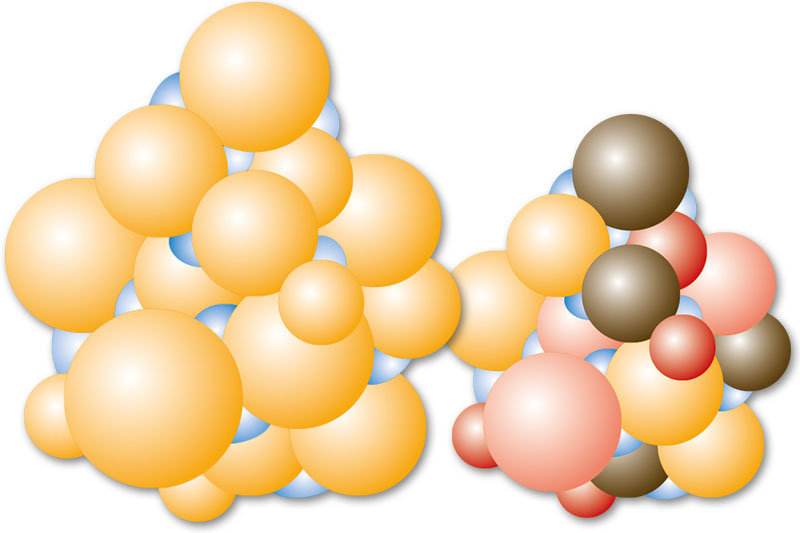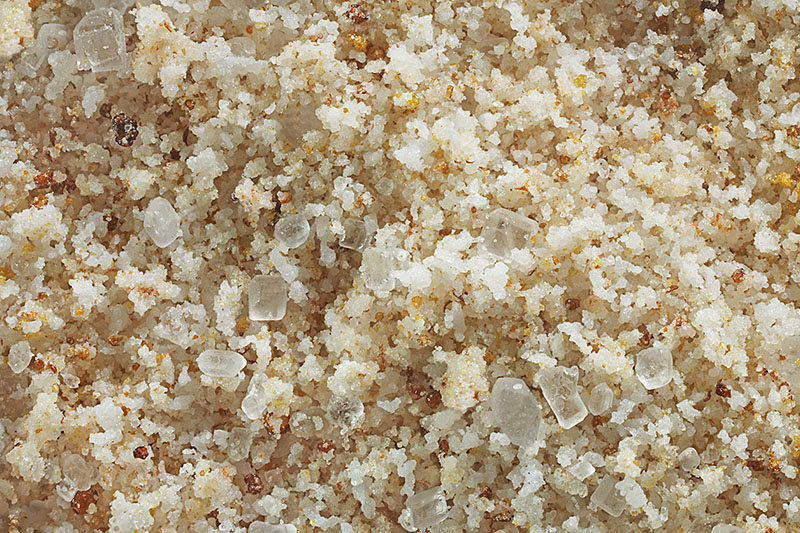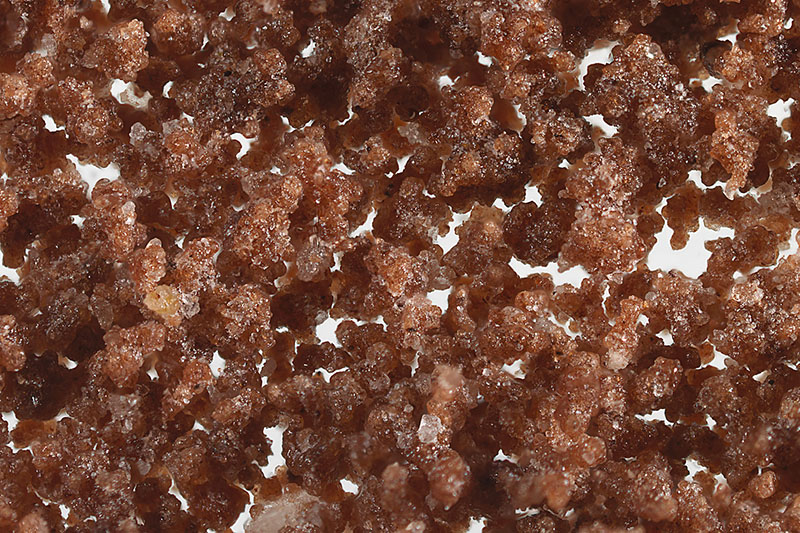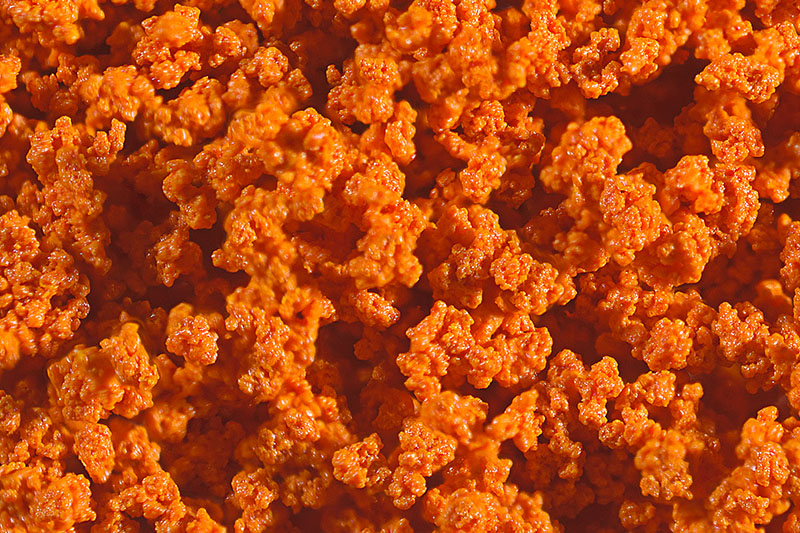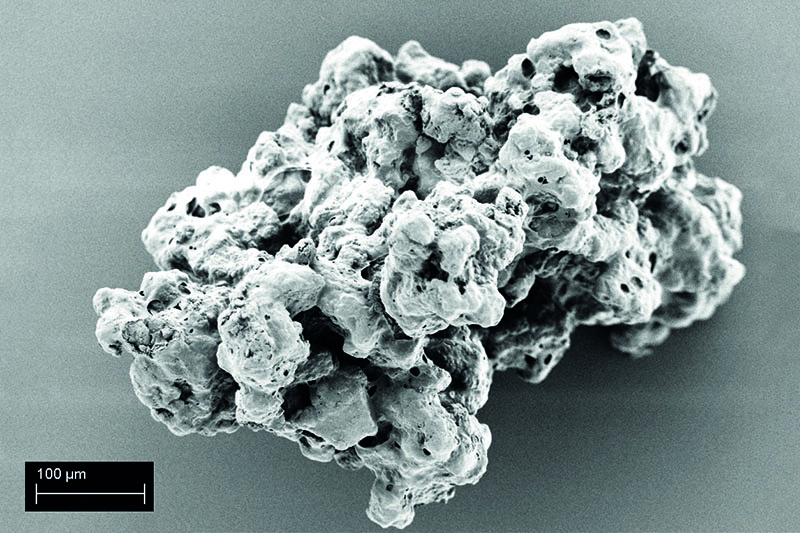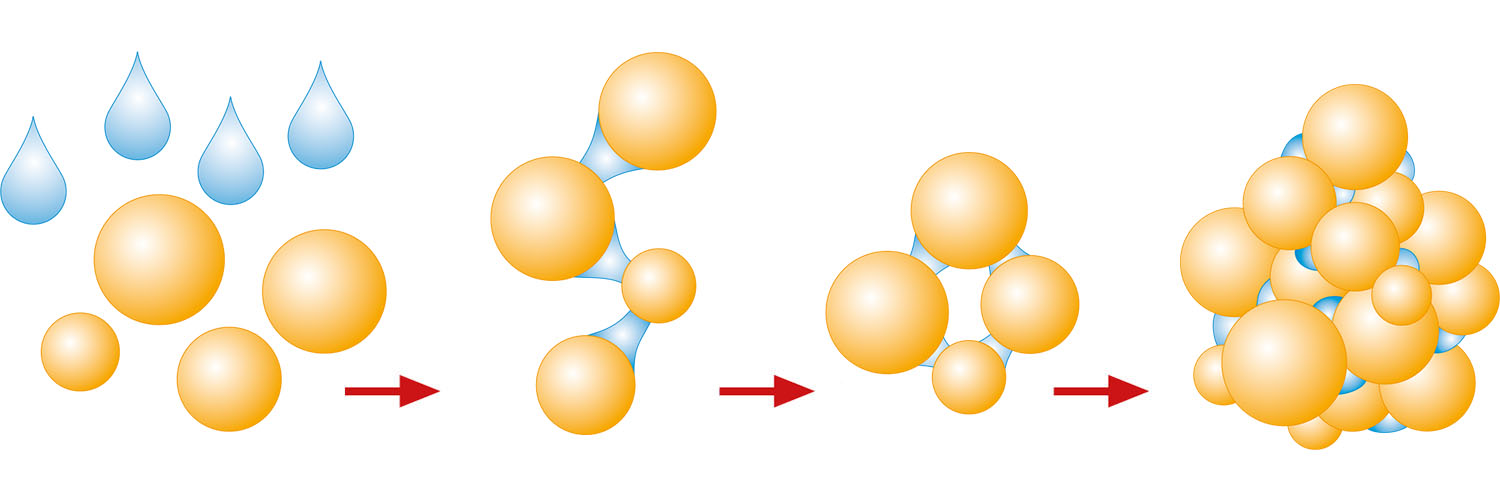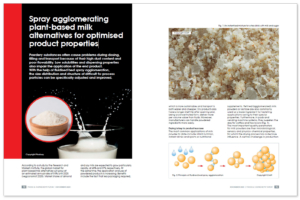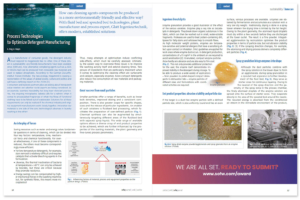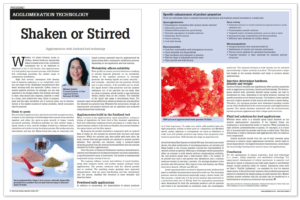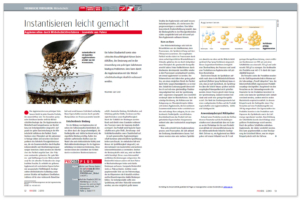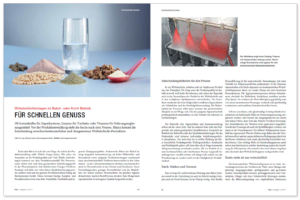Spray Agglomeration
Porous, excellent soluble granules.
Homogeneously distributed components.
Ideal instant properties.
Porous, highly dispersible granules from powders with homogeneous distribution of components
When powdery substances are to be dissolved or dispersed in hot or cold liquids, agglomerates from the fluid bed represent a significant quality improvement. The porous structure of the particles and their increased surface area are decisive for the improved wetting and solubility behavior, the ease of application and ultimately the commercial success of your product.
Fluid bed or spouted bed spray agglomeration is a common shaping process for optimizing the properties of powders. In this process, we convert dusty, non-flowable and often poorly soluble particles into free-flowing agglomerates or granules with excellent solubility. The process is particularly suitable as a precursor for tabletting and for the production of, for example, detergents, fertilizers, crop protection agents, beverage powders and other instant products as well as hydrocolloids or even sweeteners and sugar substitutes.
- This process improves flow behavior and eliminates negative effects such as dusting.
- Combining several product components into agglomerates avoids segregation effects of powder mixtures.
- For instant application, wettable, loose granules with good sinking behavior are produced, which dissolve very well.
Spray agglomeration is carried out in fluid bed systems or spouted bed systems in batch operation as well as in continuous operation.
Product properties of granules from spray agglomeration by fluid bed or spouted bed at a glance:
Dust-free
Particles
Porous
Structure
Low
Bulk Density
Excellent
Wettability
Superior
Solubility
Very Good
Dispersibility
Optimal
Instant Behavior
Optimal
Compressibility/Compactability
Good
Tabletability
Defined
Particle Size Distribution
Very Good
Homogeneity
Ideal
Component Distribution
Good
Dosability
Good
Flow Properties
In spray agglomeration in the fluid bed or spouted bed, powder is sprayed with liquid until sufficient adhesive forces are created between the particles and they stick together. Simultaneous drying directly solidifies the agglomerate structure.
Depending on the required raw material or product properties, water or any other liquid solvent can be used for granule buildup and structure formation. Suitable binders or raw material components dissolved in the spray liquid can also be used in spray agglomeration to generate additional adhesive forces or increased tack or product strength.
Typical sizes of the agglomerates range from 100 micrometers to 3 millimeters, while the starting materials can be in much finer form.
Due to their porous character and their large surface structure, the agglomerates are much easier to wet, very soluble and optimally compressible. The dust-free, free-flowing products can be easily metered and optimally processed. The variable product parameters in the process, such as particle size distribution, bulk density or porosity, enable the targeted generation of a wide range of particle properties.
Product examples for spray agglomeration
Tomato, spray agglomerated
Tea with milk and sugar, spray agglomerated
Instant cocoa, spray agglomerated
Turmeric (Curcuma), spray agglomerated
Turmeric (Curcuma), spray agglomerated, REM
The process of spray agglomeration in the fluid bed in detail
Conversion of dusty, non-flowable and often poorly soluble powder particles into free-flowing agglomerates or granules with excellent solubility.
The combination of several product components into agglomerates avoids segregation effects of powder mixtures.
In spray agglomeration, very small powdery particles are moved in the fluid bed or spouted bed and sprayed with a binder liquid. By forming liquid bridges, the particles combine to form agglomerates. The spraying process is continued until the desired size of the agglomerates is reached. After evaporation of the residual moisture in the capillaries and on the surface, voids form in the granules, while the new structure is further strengthened by the hardened binder. Due to the low kinetic energy in the fluidized bed, we thus obtain porous structures with a large number of internal capillaries. By dissolving the surface or adding binders to the solvents, the granules are stabilized after drying. Due to the relatively low mechanical compaction in the fluidized bed, the agglomerates/granules are loose, have a coarse structure as well as a large surface area with low bulk density and are thus excellently soluble in water.
Fluffy, porous, excellently soluble and well flowing granules from powder by spray agglomeration
Glatt continuous spray agglomeration in the fluid bed,
top spray
Glatt batch spray agglomeration in the fluidized bed,
top spray
From the product idea to production
In our Glatt Technology Center, we provide you with access to sophisticated technologies and support in formulation, product and process development, tailored to your individual requirements. The process always starts with tests on a laboratory system. The in-house analytics laboratory enables in-process analyses to adapt particle properties to the respective application. For reliable scale-up, process and operating parameters are determined on pilot plants. Through contract manufacturing at Glatt, your new powders, pellets or granules can be manufactured, filled, packaged and delivered directly in agreed quantities. As a plant manufacturer, Glatt provides all services from project initiation, development and realization through to turnkey production in your own plant.

